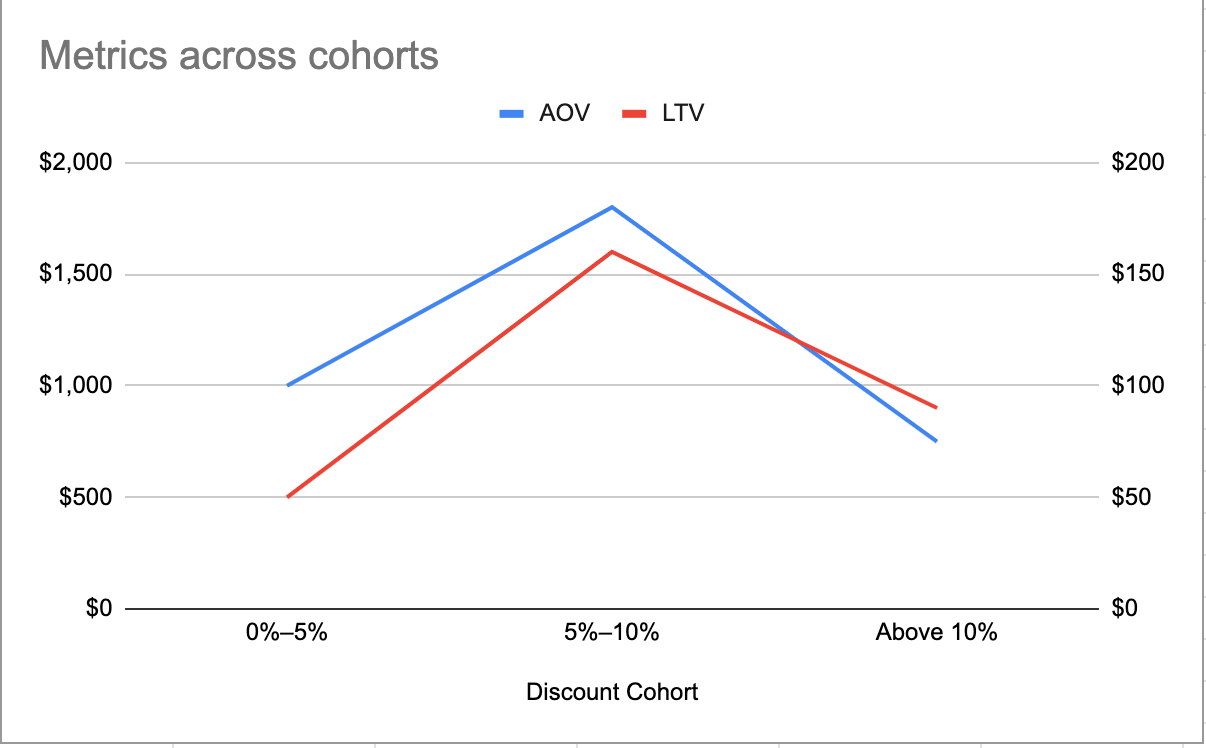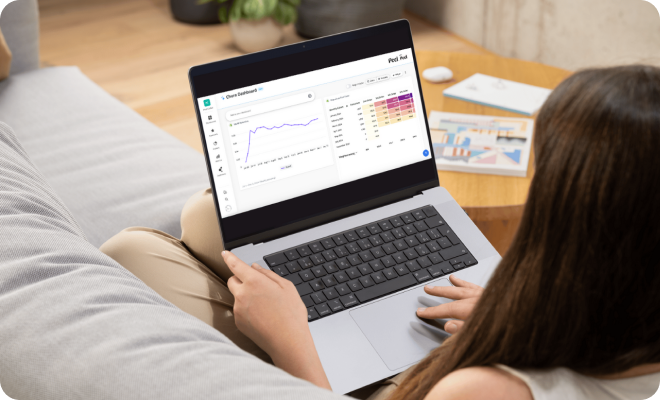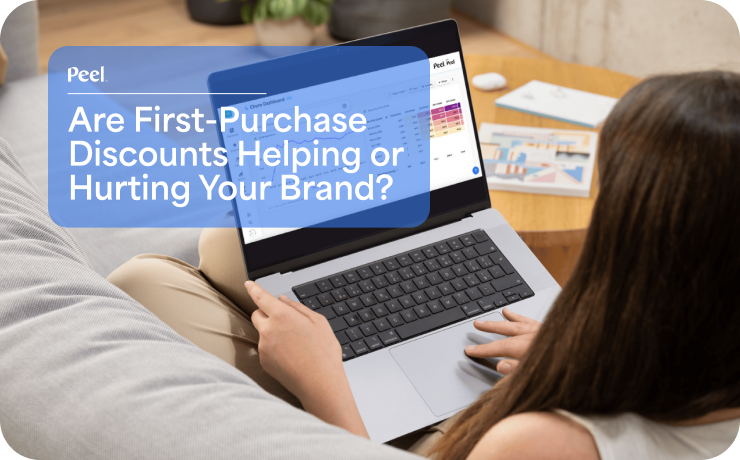First-purchase discounts are the retail equivalent of offering a stranger a free sample at the mall. The goal? Get them hooked, make them come back for more, and ultimately turn them into loyal, high-value customers.
But sometimes, the person who took that free bite of teriyaki chicken doesn’t return.
That tempting little pop-up on a website offering 10% off if you just give them your email. Or maybe it's a free shipping coupon, teasing you from the corner of the screen. It's a great hook to convert a casual browser into a first-time buyer, but what happens after?
For many brands, it's a proven tactic that effectively converts browsers into buyers, building a customer base that might otherwise have walked away. For others, it's a slippery slope that risks training customers to wait for sales.
Short-term gains or Long-term pains
In the short term, it can work wonders. That discount gets the customer to hit “buy,” and acquisition numbers shoot up. Your CFO is happy. You are happy. Your marketing team is happy.
But, here’s the thing: If you rely only on discounts to get that first sale, you might be setting a precedent. Your customers may expect future discounts; if they don’t get them, their engagement plummets.
While first-purchase discounts might seem like a small price to pay for acquiring new customers, their impact on LTV can be significant and far-reaching. This isn't just about immediate margin hits–we’re talking about the very DNA of your customer relationships.
Many brands fall into what we call the "discount trap"–a cycle where increasing discounts are needed to maintain sales volumes. This dangerous pattern can lead to:
- Eroding brand value
- Decreased customer loyalty
- Reduced marketing effectiveness
- Lower overall profitability
Finding the sweet spot
So, does that mean you ditch discounts entirely?
Well… no!
The reality is a lot more nuanced. Maybe your discount-loving cohort has a shorter LTV, but they also help you clear out inventory or bump up sales during slow seasons. Maybe they respond well to other offers like loyalty programs or product bundling. On the other hand, full-price cohorts might require more nurturing upfront, but they could yield higher profits long term.
Take the contrast between Apple and traditional retail chains. Apple rarely discounts its products yet maintains fierce customer loyalty, while many retailers have built successful businesses around a mix of full-price and promotional purchases. Neither approach is inherently right or wrong – it's about finding the strategy that aligns with your brand positioning and business model.
Research by Optimove found that new customers are much more likely to make repeat purchases and develop brand loyalty when initial discounts fall in the 5-20% range. Interestingly, there was a negligible difference in repurchase rates and customer lifetime value between 10% and 20% off.

Here’s the takeaway: Higher first-purchase discounts may increase the number of orders you generate, but they typically lower the AOV. Counterintuitively, they also reduce CLTV.
Using first-purchase discounts without sacrificing LTV
Let's explore when and how to use first-purchase discounts to drive growth while protecting your brand's value.
Entering new markets
Breaking into new markets, especially ones filled with incumbents, is incredibly hard–you need something compelling to get people's attention. First-purchase discounts can provide that perfect incentive. When entering new markets, use discounts to:
- Build initial market share by lowering the barrier to entry
- Test price sensitivity across different customer segments
- Gather valuable early customer feedback that shapes your market strategy
When Dollar Shave Club entered the razor market, they combined humor with aggressive first-time buyer pricing to challenge established players. The key was using these discounts as a temporary bridge to demonstrate value, not as a permanent crutch.
Seasonal opportunities
Timing is everything in eCommerce, and seasonal discounts can be particularly powerful when aligned with natural buying patterns. The trick is to make these discounts feel special rather than expected.
Consider:
- Using discounts during peak shopping seasons when customers are already in buying mode
- Managing inventory levels during transitional periods
- Meeting competitive pressure during key shopping events like Black Friday
Product launch windows
New products face a classic chicken-and-egg problem: customers want reviews before buying, but you need customers to get reviews. Strategic first-purchase discounts can break this cycle by:
- Incentivizing early adopters to take a chance on your new product
- Building initial product awareness and buzz
- Creating a base of customer reviews and social proof
Like how Samsung uses pre-order discounts on new phone launches. They're not just selling at a discount, they're rewarding early adopters and building launch momentum.
Related: Find high-value customers with a discounting strategy. Read More.
Know if your discount strategy is working
The key question isn't just whether discounts bring in new customers, but whether these customers become valuable long-term assets to your business. The answer lies in the data, specifically in cohort analysis.
By comparing groups of customers based on their acquisition channels and initial purchase behavior, you can uncover valuable insights about long-term customer value.
Let's walk through an exercise that will help you analyze this with your own data:
Step 1: Segment customers by discount affinity
The first step is to segment your customers based on the discount they received on their initial purchase. Create three cohorts:
- 0% - 5% Discount: Very low or no discounts
- 5% - 10% Discount: Medium discounts
- Above 10% Discount: High discounts
You can do this by pulling a report of all first-time customers and calculating the discount percentage for each order. Then group them into the three buckets above.
Step 2: Analyze Customer Lifetime Value
For each of your discount cohorts, calculate the average customer lifetime value (LTV). LTV is a crucial metric that represents the total revenue you can expect from a customer over the course of their tenure with your brand.
To calculate LTV, you'll need these data points:
- Average Order Value (AOV): The typical amount a customer spends per order
- Repeat Purchase Rate: The percentage of customers who make a second purchase
- Average Purchase Frequency: The average number of purchases a customer makes per year
- Customer Lifespan: The average length of time a customer remains active
With these inputs, you can use the formula: LTV = AOV x Repeat Purchase Rate x Average Purchase Frequency x Customer Lifespan
Analyze how the LTV differs across your three discount cohorts. Does offering a larger first-purchase discount correlate with higher or lower LTV?
Step 3: Examine relevant metrics
In addition to LTV, take a look at the repeat purchase behavior of each discount cohort. Calculate the 6-month and 12-month retention rates for each group. It’s also important to analyze KPIs like profitability, contribution margin, CAC across cohorts to truly understand the long-term impact of your discounting strategy.
Step 4: Draw insights
Create a chart that compares CLTV and retention rates across the three cohorts. You can use a bar chart or line graph so you can easily spot any differences between the groups. You’ll arrive at a chart that probably looks like this:

Take time to thoroughly analyze the chart and identify the key insights that emerge. Dig deeper if needed to uncover meaningful patterns in your customer data.
Metric
Description
Retention Rate
- How many customers return for a second purchase?
- What's the average time between purchases?
- How do retention rates differ between discounted and full-price first purchases?
LTV
- How do the average LTV values compare across the discount groups?
- Is there a clear correlation between discount level and long-term customer value?
- Which cohort shows the highest LTV, and by what margin?
Purchase Frequency
- Do discount-acquired customers buy as frequently?
- How does seasonal timing affect purchase patterns?
- What's the average order frequency over 12 months?
Average Order Value
- Do discount-acquired customers maintain lower AOV?
- How does AOV evolve over time?
- What's the impact on product mix selection?
Profitability
- What's the gross margin per customer over time?
- How do marketing costs differ between cohorts?
- What's the true ROI of discount-driven acquisition?
Tips to optimize your discount strategy
Now that you have plenty of data from your analysis, you can optimize your first-purchase discount approach. Consider experimenting with the following tactics:
Find ideal discount levels
Your analysis likely uncovered an optimal discount range - perhaps something in the 10-15% off zone. Use this as a starting point to fine-tune your maximum discount offer.
Start by testing a reduction in your highest discount tiers. For example, if you were previously offering 20% off, try capping it at 15% and observe the impact on conversion rates and long-term customer value. Gradually adjust the maximum until you find the sweet spot.
The goal is to provide enough of an incentive to drive that initial purchase, without training customers to expect deep discounts every time.
Implement tiered discounts
Instead of a one-size-fits-all discount, consider a more nuanced tiered approach. Offer smaller initial discounts (e.g. 10%) for first-time buyers, then increase the rewards for loyal customers who make repeat purchases.
This accomplishes a few key objectives:
- It avoids setting unrealistic price expectations from the start.
- It encourages long-term relationships by offering greater incentives over time.
- It naturally segments your customer base based on lifetime value.
A tiered strategy helps you strike the right balance between acquiring new customers and retaining high-value, repeat buyers.
Pro-tip: Not all first-time visitors are created equal. The person who spent 30 minutes browsing your product pages deserves a different approach than someone who clicked through from a promotional email.
You can set up different discounts for customer cohorts based on their acquisition channel or campaign. Study your data to find optimum discount levels for different cohorts and adjust your Welcome Automation based on that.
Time your discounts
Start by analyzing your peak browsing times. When are your customers most engaged? When do they typically make purchase decisions? Use this data to:
- Launch first-purchase discounts during high-intent periods
- Create urgency with limited-time windows (but avoid the "constant countdown" trap)
- Test different duration windows to find your sweet spot
Let's say you're analyzing your website traffic data and notice that visitors between 7 PM and 11 PM spend 40% more time browsing your product pages compared to daytime visitors. This presents an opportunity. You could:
- Set up time-sensitive discount displays that activate during these evening hours
- Create special "Night Owl" offers like 'Evening Special: 15% off your first purchase between 8-11 PM'
- A/B test different evening offers:
- Version A: "Can't sleep? Enjoy 15% off your first purchase"
- Version B: "Evening Exclusive: Free shipping on your first order"
For example, if your standard welcome offer is 10% off the first purchase, try increasing it to 15% specifically during evening hours. Run this test for 30 days while tracking:
- Conversion rates during evening vs. daytime hours
- Average order value with timed vs. standard discounts
- Return rates from orders placed during different times
- Customer lifetime value based on acquisition time
This way, you're not just offering discounts blindly – you're strategically timing them when your potential customers are most engaged and likely to convert.
Explore Non-Discount Incentives
Sometimes the best "discount" isn't a discount at all. Instead of slashing prices, consider offering alternative incentives that preserve your brand's perceived value:
- Free shipping thresholds that encourage larger order sizes
- Product bundles that increase average order value
- Exclusive early access to new product releases
- Members-only sales or loyalty program benefits
These types of value-added offers can be just as compelling as a straight discount but without the risk of training customers to only buy when there's a sale. Like how Amazon Prime turned free shipping into a loyalty program – it's technically a "discount" on shipping, but it feels like a premium membership benefit.
Discount with caution
First-purchase discounts can be a fantastic way to open the door to new customers, but they shouldn’t be your entire strategy. Use cohort analysis to dig into the data and uncover how these discounts impact long-term customer value.
Done right, you can strike a balance between attracting new customers with a discount and retaining them with value. Your brand should sell itself—coupon or no coupon!







.webp)



.avif)



.png)


.svg)
.svg)